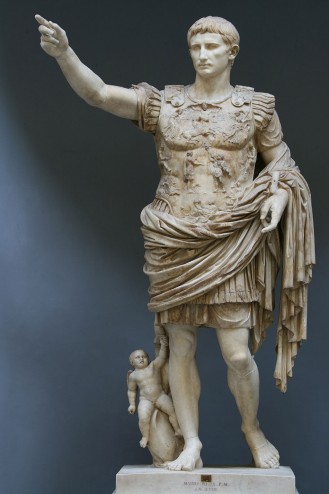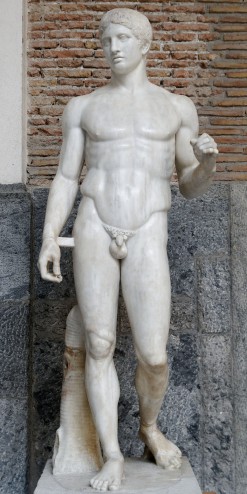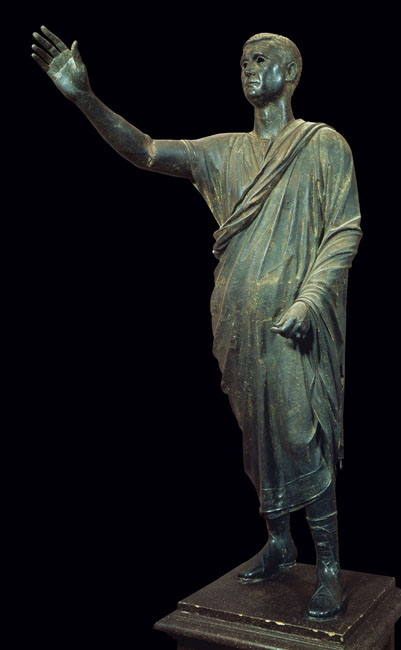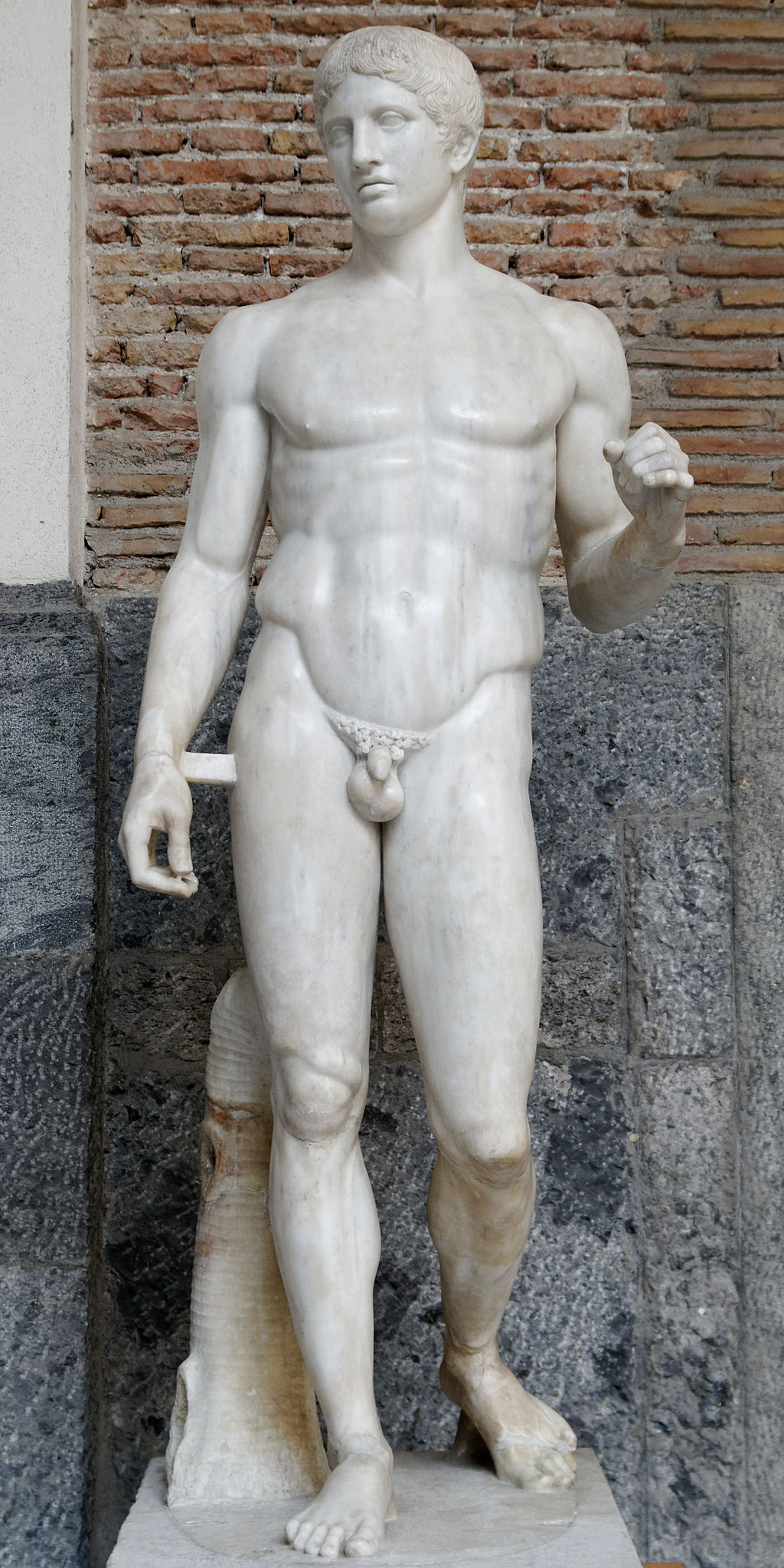Perhaps the Romans were not the most original artists, but they really knew how to work with what they borrowed.
 Augustus of Primaporta, c. 20 BCE, Marble, 6’8”, Musei Vaticani, Braccio Nuovo, Rome, Public Domain via Wikimedia Commons
Augustus of Primaporta, c. 20 BCE, Marble, 6’8”, Musei Vaticani, Braccio Nuovo, Rome, Public Domain via Wikimedia Commons
This is the first Roman emperor, Augustus, which means, “Supreme Ruler.” He was the grandnephew and adopted son of Julius Caesar. When Augustus became emperor, he reinstated the Roman Senate, the ruling entity during the Roman Republic; yet, he also made himself an autocrat and claimed that his family was descendent of the Gods.
And with this, he established an absolute monarchy in the guise of a republic.
The sculpture reflects the kind of paradox Augustus created with his government because he borrows two sculptural styles that have contradictory symbolism. The artist took the orator’s gesture from Republican art that shows portraits of actual Romans, like the sculpture of the Roman Senator Aullus Metellus. The stance and perfect physique comes from Classical Greek sculptures of gods and idealized athletes such as Polykleitos’ sculpture of the Doryphoros (see both sculptures below).
Here, the reference to the Roman sculpture indicates he had the support of the Roman Senate and was working within their tradition of debate and reason. The reference to Classical Greece provides an idealized element, comparing Augustus to Greek notions of the perfection and harmony of the Divine. It also associates Augustus with the political golden age of Classical Athens.
The small figure of Venus’ son Cupid riding a dolphin (near his right leg) is there to claim Augustus’ descendency from the goddess Venus. His bare feet are symbolic of his divinity as well.
Together, the styles borrowed for the sculpture effectively present emperor Augustus as “Supreme Ruler,” or the Roman who was also a God.
 Doryphoros, Roman copy of an original by Polykleitos from c. 450-44 BCE, Marble, 6’6”, Museo Archeologico Nazionales, Naples, Public Domain via Wikimedia Commons
Doryphoros, Roman copy of an original by Polykleitos from c. 450-44 BCE, Marble, 6’6”, Museo Archeologico Nazionales, Naples, Public Domain via Wikimedia Commons
Recommended Reading




